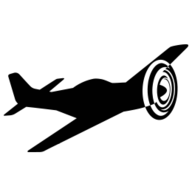По первой попавшейся ссылке про VFR/IFR в Яндексе:
The basics:
1. Low Instrument Flight Rules (LIFR): Ceilings are less than 500 feet above ground level
and/or visibility is less than 1 mile.
LIFR = <500′ and/or <1 mile
In other words, even experienced IFR pilots may have a hard time landing. With these conditions, they’ll break out just above the standard minimums for an ILS approach (200-1/2)
LIFR is depicted in
Magenta on flight planning software such as
Skyvector.com and
Foreflight.
2. Instrument Flight Rules (IFR): Ceilings 500 to less than 1,000 feet
and/or visibility 1 to less than 3 miles.
IFR = 500-1000′ and/or 1-3 miles
In other words, you must be on an IFR Flight plan or request
Special VFR clearance from tower.
IFR is depicted in
Red on flight planning software.
Note: VFR pilots can’t do Special VFR
at night unless they are Instrument rated. To read more on Special VFR clearances,
click here.
3. Marginal VFR (MVFR): Ceilings 1,000 to 3,000 feet and/or visibility is 3-5 miles inclusive.
MVFR = 1000-3000′ and/or 3-5 miles
This is when VFR pilots kill themselves all the time. If you haven’t flown in MVFR, ask a CFII to take you up so you can scare the sh@*t out of yourself.
MVFR is depicted in
Blue on flight planning software
Remember, METARs only cover within 5NM of the airport. You have no idea what will happen the farther you get out. This is especially true in mountainous terrain.
You also need to maintain VFR cloud clearance in Class E airspace which starts at 700 or 1200 feet AGL. So if the cloud bases are at 2000 feet you have to fly at 1500 feet. No matter what the terrain is doing you have to stay 500 feet below the clouds so you can avoid descending IFR traffic.
Do you see where this can get back really quickly?
If you don’t have an instrument rating, you should seriously consider staying home when the conditions are MVFR.
If you have an instrument rating, file IFR! Don’t scud run!
4. VFR: Ceiling greater than 3000 feet and visibility greater than 5 miles (includes sky clear).
VFR = >3000′ and >5 miles
VFR is depicted in Green. If you see green dots, that’s great! Go fly! (unless the winds are too strong, or there are
convective SIGMETs….)
What are the differences between LIFR, IFR, MVFR, and VFR and how you can use that knowledge to quickly steer clear of dangerous conditions?

www.thinkaviation.net